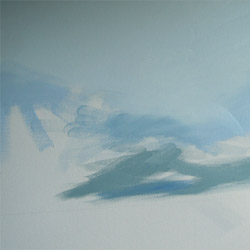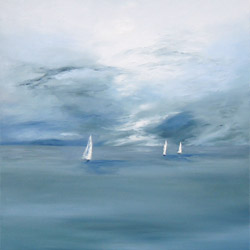
|
How a Painting Evolves 



What is the difference between a "good painting" and a "great painting"? The difference, of course, is in the eyes of the beholder. In most cases, what is considered a great or, conversely, a minor artwork has more to do with its audience than its author. Exceptions abound (think Monet). But there are many steps the artist can take to ensure their audience is enthralled with their works rather than disenchanted. To that end, I offer what has always rung true for me: A painting will most often fail when the artist does not pay attention to the basics. The most highly regarded of my works came about in part because of the time I spent mixing the right colors. Often as much time is spent in mixing colors as in putting the paint on canvas. For me, too much reality in my painting is always a disappointment. I'm working to create an emotional connection with my audience, not trying to recreate a replica of a scene. To begin, I block in paint shapes; I don't try to exactly draw in the objects of my desire. It's true that odd numbers of objects are more interesting and pleasing to the eye than even numbers, i.e., 1 or 3 sails, not 2. Emotion rules over all, but still, one needs to pay attention to the basics. Shading and shadows are meant to anchor objects. Most objects are not meant to float. Shadows in clouds are lighter in value than shadows on the ground plane. To really "see" what you're creating, you have to put down the brush and step away from the canvas often. Above all, SIMPLIFY. SIMPLIFY. SIMPLIFY. Only then the painting is freed and ready to go out into the world and meet its audience who, of course, will be enthralled! |
S I T E M A P
All works original and © Copyright of the Artist, Cheryl Hardin.
chardinart.com © Copyright 2006-2024 Cheryl Hardin. All Rights Reserved. USA.